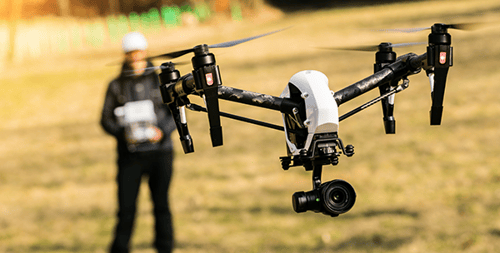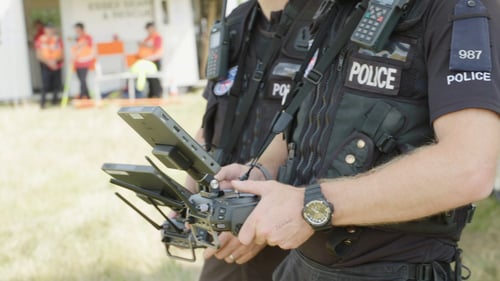 By Callum Holland
By Callum Holland
Here at ScaleFlyt, we work with organisations of all sizes that have big ambitions for their enterprise drone operations, but what are the first steps to starting a drone programme in your business?
In recent years the drone industry has witnessed a shift to organisations developing their own in-house drone operations capability, as an alternative to outsourcing. There are many reasons why a business might like to operate this way, including the need to assure quality, developing desirable skills in-house, and closely managing any risk. Though these reasons are sound, we quite often see these business become stuck when trying to scale their operations, or even struggle to get started.
There’s a wealth of evidence supporting drones as an excellent tool for data collection, and it’s widely reported that their uses are expected to grow exponentially as drones become a ubiquitous sight in our skies.
Ultimately, drones are simply another tool to achieve a result, and they might not be the right solution for every business. In this article, we cover three straightforward rules that organisations can follow to assess viability of the adoption of drones.

Please, never buy a drone or start a drone programme just because one of your staff ‘thinks’ it’s a good idea (or because it’s their weekend hobby or they want the business to pay for their training).
Embarking on a drone programme without full understanding of the capital and operational expenditure, resourcing requirements or risk offset is asking for trouble.
There are plenty of examples online of business cases, and large organisations will have their own justification processes; just make sure yours is nailed down before progressing to a stage where you’re committed.
The basics of your drone operations business case should cover:
- “What problem am I trying to solve?”
- “Will drones offer me the data I need?”
- “What are the risks and costs involved in operating a drone programme?”
- “How much could we save in time, risk, effort and money?”
This requires cross-functional support from across your organisation to collect as many use-cases as possible. Analyse your current methods, time spent, effort, costs and risks against those of utilising drone technologies to accomplish at least the same output; or a blend of both to accomplish your requirements.
Our advice is to follow the data to properly qualify and quantify the value proposition of drones for your organisation or business.
So, you’ve followed Rule 1 and it makes sense to explore this further.
The next rule is to allocate a small budget to prove the business case. Pick a straightforward use-case (or two) and do it. Prove the use of drones can save you time, reduce risk and offer value to you. Having it articulated in a business case is great, but proving it in the real world is better!
The team at ScaleFlyt by Thales works with people just like you to help shape the data requirement (sensors, aircraft, etc), compliance management (Regulatory and organisational process) and delivery structures (people, training, equipment management) to get your drone programme off the ground.
In the words of the American author Teal Swan: “We do not fear the unknown. We fear what we think we know about the unknown.”
This quote surmises certain decision making around the instigation or growth of drone programmes globally. Senior management fear the perceived risks, lack of clarity on cost, are unclear on the opportunities to save, or make, money and are happy to sustain the status quo because ‘it’s always been done this way’.

Examine the data surrounding drone technology and be prepared with some compelling evidence. Drones can be deployed at a fraction of the cost of an equivalent human team or manned aircraft, without compromising on quality of output.
Though there will always be risks inherent in flying anything, in many cases the use of drones often represents a far stronger safety case than the same difficult and dangerous work undertaken by humans – most notably in inspection use cases, which can save businesses and local authorities millions per year.
Summary: the right drone programme for the right reasons.
Drones are great. They offer insights that are otherwise difficult to accomplish, as well as offering the opportunity to offset risk, reduce costs, increase efficiency and save money. But they aren’t right for everyone, or in all circumstances, so use these three rules to confirm if drones are right for you.
Here at ScaleFlyt, we are a passionate team of UAS experts. We can help organisations put drone programmes in place and provide digital solutions to take care of the administrative and regulatory burden.
To learn more about how ScaleFlyt can help your business, sign up for free or request a detailed consultation with our team.
ScaleFlyt powers compliant UAS operational management. It’s free to register and is compatible with all Windows, iOS and Android devices.
Become part of the community shaping the future of operational drone management, today.